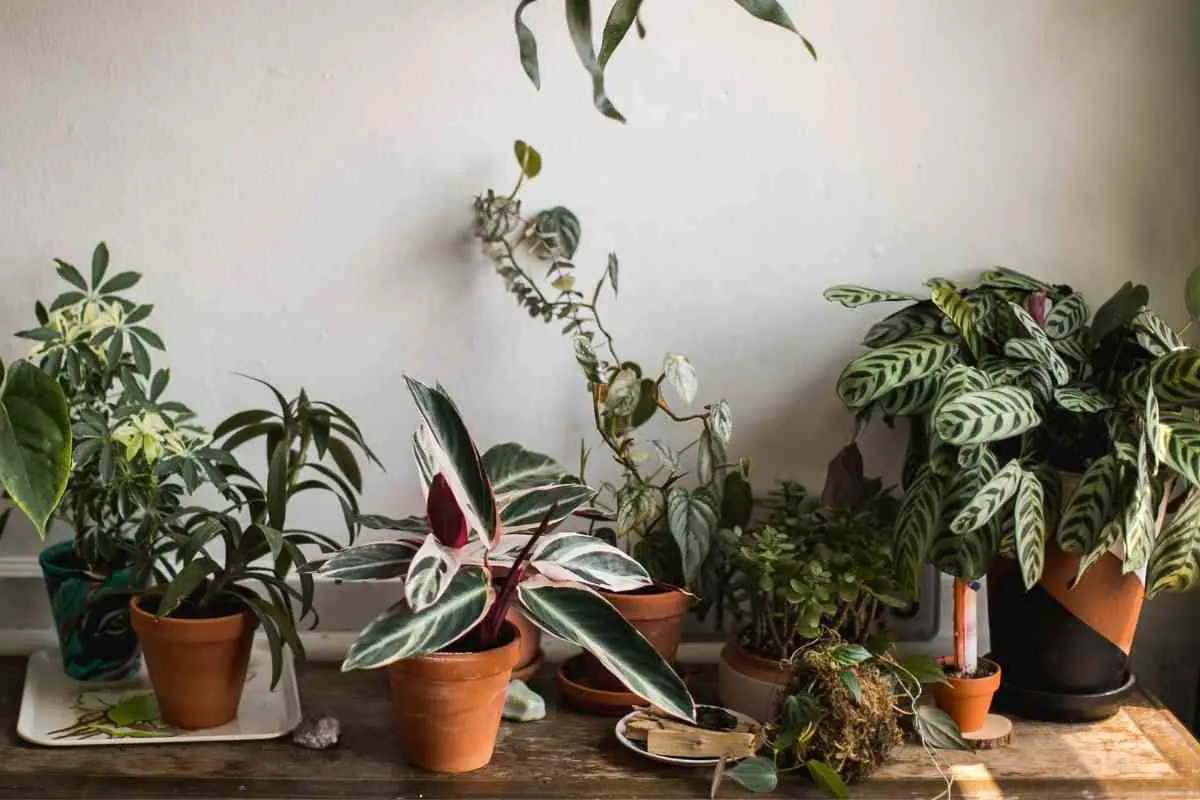House plants usually have a calming effect that is almost therapeutic.
Even better, some, such as blue plants, provide an aesthetic appeal and contribute to your home’s interior look.
They have blue leaves that result in a striking visual impact.
Blue house plants have blue hues that appear on their leaves, flowers, and stems.
There are many species that originate from different parts of the world, all of them with different sizes and rates of growth.
The one common characteristic of blue houseplants is that they are easy to maintain.
What to Expect? This article is going to highlight five of the most amazing blue plants that you can grow in your house.
Why Are Some Plants Blue?
Plants are predominantly green, so it is out of the norm to find one with blue leaves or stems.
Essentially, some plants are blue so that they are in a better position to absorb the light required for photosynthesis.
This is especially so when they are growing in a shady area.
In some plants like the Begonia pavonina, the chloroplasts, which are responsible for light absorption, are arranged in stacks to form crystals.
Normally, chloroplasts have a random arrangement inside the leaf of a plant.
The photonic crystals in Begonia pavonina give the leaves of the plant a blue hue.
When a plant has a blue leaf, it mainly absorbs green and red light frequencies. In essence, it absorbs more light energy than plants with green leaves.
5 Amazing Blue Plants
The following are five of the most beautiful blue plants that are also easy to grow indoors.
They are low maintenance and do not require too much attention for them to thrive.
For the most part, the primary requirements are:
- sufficient light
- water
- and containers with good drainage
1. Creeping Blue Sedum
Scientifically referred to as Sedum sieboldii, the creeping blue sedum is a perfect houseplant.
Not only is it beautiful with its blue leaves, but it is also pretty easy to maintain.
With enough sun and well-draining soil, the plant will thrive.
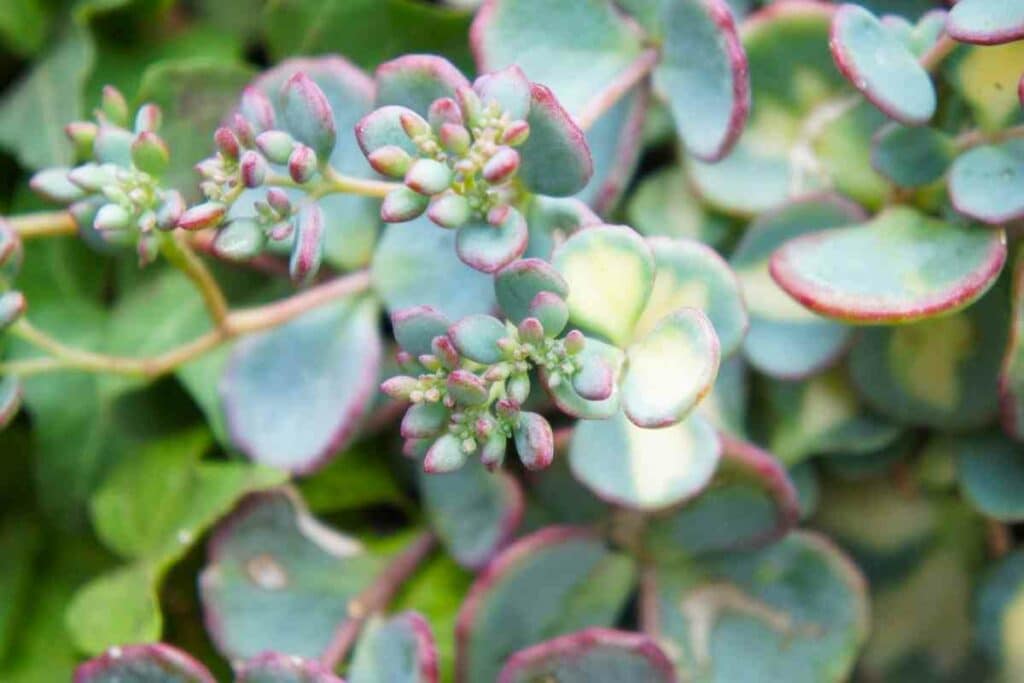
Therefore, it will help to place it close to the window where it can access the sun and water it once or twice a week.
The leaves of this beautiful plant are generally small and grow to a height of 6 inches to 12 inches. Blue in color, the leaves are succulent with jugged outer edges.
The edges also have a hint of pink lining. During winter, the plant blooms to produce small, pretty pink flowers, which attract pollinators.
The plant can tolerate drought, which is common with succulents.
So, you could go for a weeks’ long trip, and it would still be thriving when you get back home. It is also pest-resistant, which contributes to its low-maintenance characteristic.
To Consider – Most people grow the creeping blue sedum in a pot and place it either indoors or on the balcony. It enhances the overall appearance of your home.
2. Silver Sword Philodendron
The Philodendron hastatum, as it is scientifically referred to, is a native of Brazil.
Its leaves give it an aesthetic appeal as they have a blue tinge which sometimes appears silver depending on the angle of the leaf.
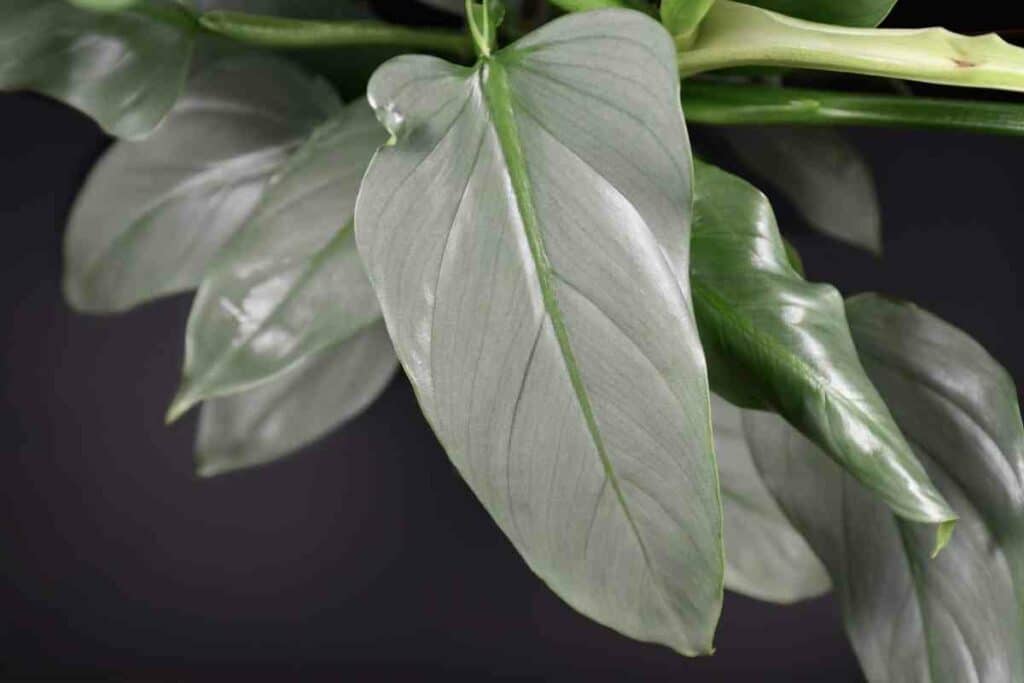
This quality has made it a favorite among houseplants, as it elevates the outlook of a home.
As per the name, the leaves of this plant are sword-like and quite broad. They can grow up to a whole meter indoors and up to 3 meters when growing outside.
Taking care of the silver sword philodendron does not require a degree in botany as it is pretty straightforward.
Provide it with water every two to three days and put it away from direct sunlight. Still, the plant can tolerate low light levels.
Also, the soil should only be moist- never wet. Therefore, ensure that you get a pot with excellent drainage and aeration so that the plant does not soak and get destroyed.
It is wise to change the container as the plant grows bigger, so it has enough space.
3. Blue Agave
The blue agave is natively Mexican.
It naturally grows in various Mexican towns at 3000 m to 6500 m above sea level.
Also known as Agave tequilana in scientific circles, this blue-leaved plant is suitable for growing indoors. On top of oxygenating your house, it also adds aesthetic value.
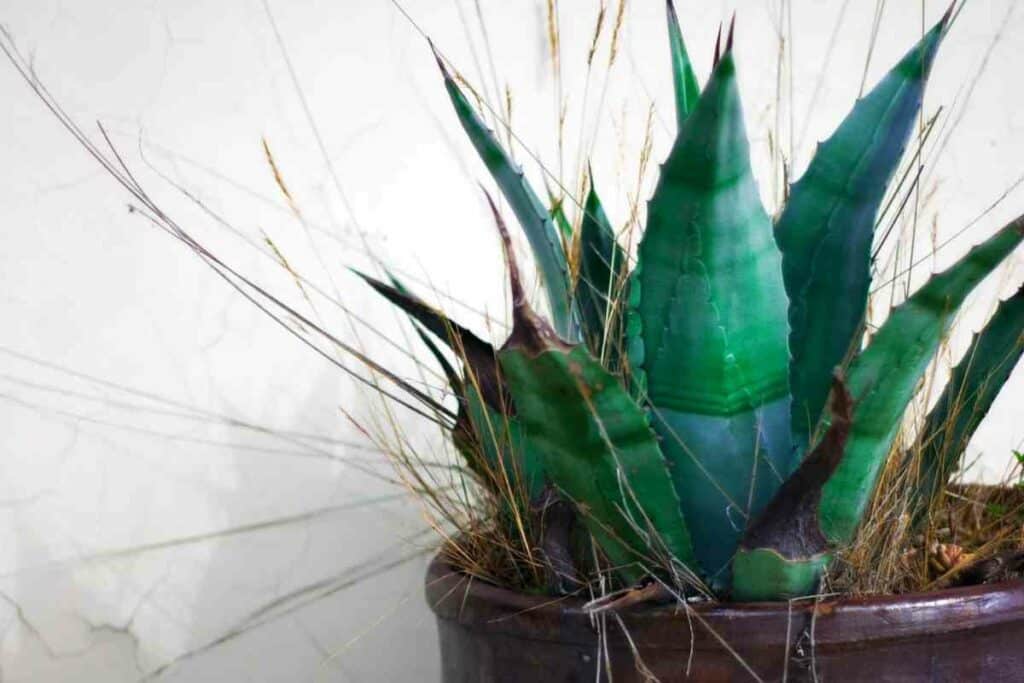
When growing blue agave in the house, the leaves of the plant can reach 5 feet in diameter. So, it is advisable to provide enough space to allow for growth.
Moreover, the edges of the leaves have spikes and a pointed needle-like end, all of which may cause an injury if you are not careful.
Besides that, the leaves are pretty thick, with a blue waxy cover that gives them a blue hue.
Taking care of it is a breeze, really:
- For one, you ought to use a pot that is wide but not necessarily deep. If the pot is ceramic, the better.
- Also, ensure it has access to sufficient lighting and fresh air.
- Just like the Sedum sieboldii, next to the window or out in the patio is the best place for the plant.
- The blue agave does not require too much water to thrive, so watering it once a week should be enough. It is recommended that you replant it once every three years.
One interesting fact about this plant is that it is used to make tequila, which explains its scientific name.
4. Belosynapsis Ciliata
Unliketheblue agave, the belosynapsis ciliate is characterized by small leaves and flowers.
The leaves only grow to a height of 6 to 8 inches and a width of 18 to 24 inches. Therefore, a small pot should be adequate to contain the plant.
Native to Madagascar, this plant does not require much to grow and thrive. Generally, it thrives in warm temperatures.
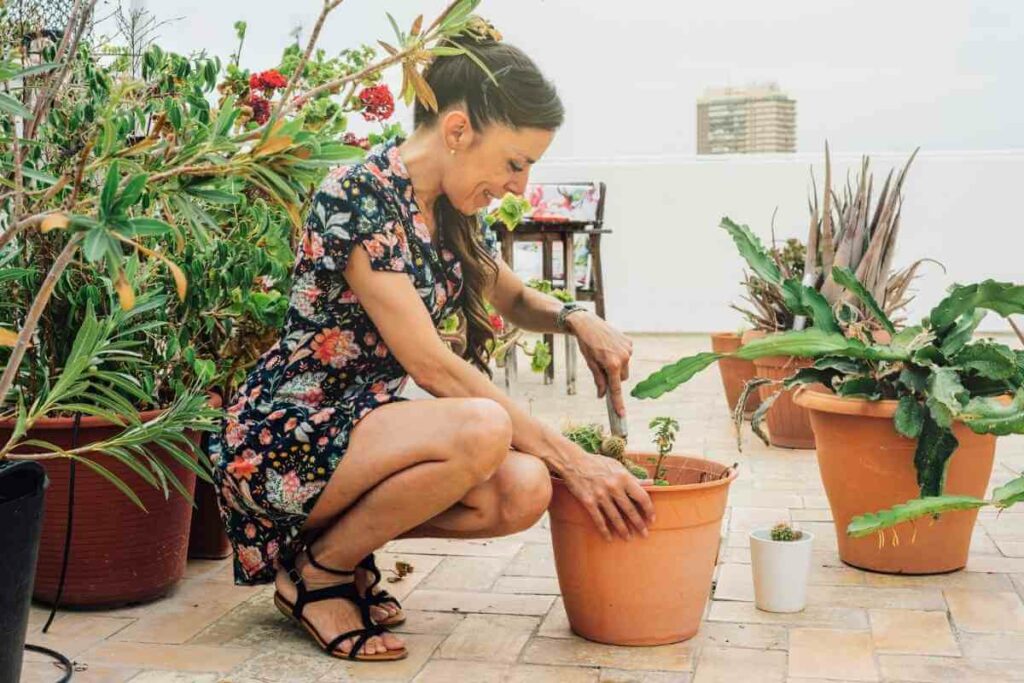
All it needs is good drainage and aeration, so ensure that the container is built to facilitate that. Also, you should not expose it to too much sunlight.
If anything, partial shade would be perfect for ensuring perfect growth.
Moreover – The soil should be slightly acidic to neutral- the most suitable pH would be between 6.1 and 7.3.
The plant has tiny blue flowers that give it its aesthetic appeal. They are less than an inch in size.
If you have a blue theme running in your house, the Belosynapsis ciliate would perfectly complement your interior décor.
5. Crassula Ovata Plant
This South African native plant is so beautiful that some people call it the blue bird.
It grows like a bonsai and has the appearance of a miniature tree. It is short and succulent with a bushy appearance.
The leaves are curled and the edges wavy, which is pretty artistic. Other people call it the curly crassula because of this.

Also, the plant forms dense clusters around its stem, stalk, and roots.
Growing it is not difficult because, for one, the crassula ovata plant can grow in different environments. Its main requirements include plenty of light and sufficient water.
Therefore, you should ensure that it receives direct sunlight every day and you water it at least once every seven to fourteen days.
Still, the plant is known to tolerate drought, so if you end up going long periods without watering it, you would not have to worry about its survival.
The leaves are smooth, shiny, and fleshy with a blue-green tint. They have a certain aesthetic appeal that looks really good in the house.
Heads Up! While the plant is disease-resistant, it is toxic to cats and dogs. So, you probably should consider the other plants mentioned above if you have pets in the house.
Do Blue Houseplants Carry Out Photosynthesis?
Despite the blue pigmentation, blue houseplants can carry out photosynthesis.
Just like all other plants, they contain chlorophyll, the green pigment that orchestrates the process of photosynthesis. The chlorophyll is in the foliage, just under the blue pigment.
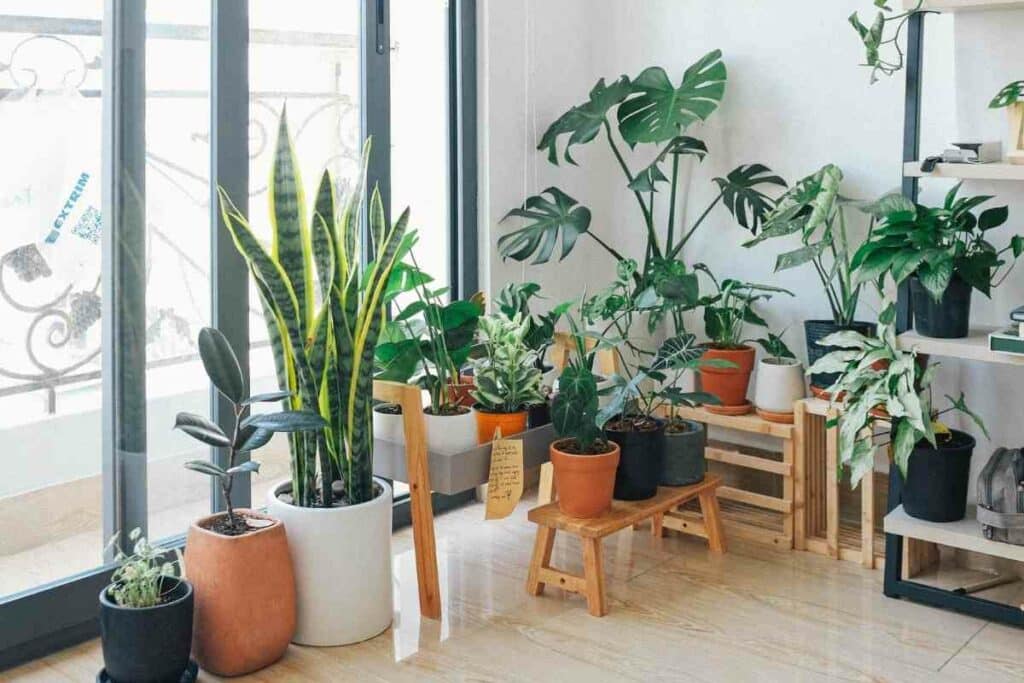
Furthermore, most of these plants are actually green.
Only, they have wax layers on the leaves that are blue. Others only create an illusion that they are blue. So yes, blue houseplants do carry out photosynthesis.
Final Words
Home is the place where we kick back and relax. It helps when the house is not only peaceful but beautiful as well.
Plants are a good way to enhance that homey feeling. Blue houseplants do more than that- they bring out striking, visual pleasantness.
They are also pretty easy to take care of, and most require minimal maintenance to thrive.
Some of the most amazing blue houseplants, as discussed in this article, include the creeping blue sedum, silver sword philodendron, blue agave, Belosynapsis ciliate, and the crassula ovata plant.
